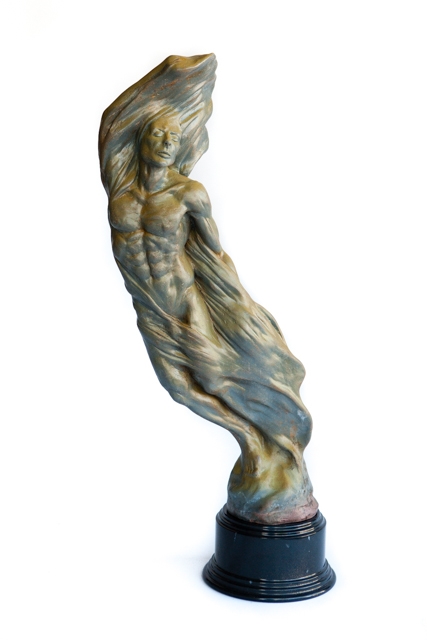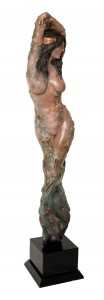Make It Organic
 One of the most challenging elements of the sculpting parties is to help people see the human body as a continuous flow of organic shapes. Most people see the human body as 4 planes: side, side, front, and back. You can see the edges joining those 4 sides making them almost independent from each other. I have to repeatedly prompt people to make it organic by eliminating the sharp edges because it needs to flow. Every part of the body has independent significance and we can dedicate a lot of time on each one, but the most important aspect is to make all the separate parts a cohesive unit. It is one body. All the parts make one.
One of the most challenging elements of the sculpting parties is to help people see the human body as a continuous flow of organic shapes. Most people see the human body as 4 planes: side, side, front, and back. You can see the edges joining those 4 sides making them almost independent from each other. I have to repeatedly prompt people to make it organic by eliminating the sharp edges because it needs to flow. Every part of the body has independent significance and we can dedicate a lot of time on each one, but the most important aspect is to make all the separate parts a cohesive unit. It is one body. All the parts make one.
When it comes to painting there is not much of a difference in the concept. We can have many elements in a painting but it is one painting. The composition and representation of all the elements need to flow to make it all one thing. How colors are applied has a lot to do with this, pretty much the same way as blending and flowing in sculpting. I encourage people not to clean the brushes to allow the colors to mix as they paint in such a way that all the colors used appear throughout the whole painting instead of having patches of colors here and there.
Life is no different either. People often want to compartmentalized their lives not realizing that it is one life. To compartmentalize life only produces sharp edges and patches of colors that interrupt the flow and organic nature of life itself. Everything must flow and intertwine. That is the meaning of the concept of ‘blessing’, ‘being blessed’, ‘being complete’, or ‘peace’. The salutation known as ‘shalom’ to the Hebrews. Let us have it on earth as it is in heaven, and in life as it is in art.





The Pain of Cognitive Dissonance
Bow
What a pain in the neck is asking a question and getting a dozen conflicting answers! Why is it so difficult to get a straight answer? All you want is a straight answer that you can put into an effective plan of action. It seems like all the advice you get is contradicting and confusing. That mental stress and discomfort is caused by cognitive dissonance and it happens when you have to balance two or more contradictory beliefs, ideas, or values. You like peace of mind, balance, and as psychologists call it you want ‘internal consistency’. However, the pain of cognitive dissonance is necessary as growing pains.
Cognitive dissonance is an important catalytic for learning. Learning is not about transmitting knowledge like giving away a box of chocolates. Learning is the process of making meaning through consciously balancing previous knowledge with the new information. It requires reflection and intentionality. Humans are not machines in which an algorithm is inserted and automatically executed without cognitive processing. When conflicting ideas emerge these are sorted out and considered based on reliability, credibility, and delivery. In some cases, when information doesn’t serve to balance dissonance it is just discarded.
You love unwelcome advice, don’t you? How about uninformed advice or critique? People love to give uninformed advice. They tell you how to do something and how to do it right without examining what you are doing and how you are doing it. Your brain generally rejects the information. When you seek advice or critique you are ready to receive and consider the information. This is why instructional design considers (or at least should) of great importance to perform a needs analysis before suggesting a learning solution. When you go to see a doctor you expect a check up before a prescription. It is unreasonable for a mechanic to tell you how much repairs are going to cost before they assess the damages.
Information is consciously or unconsciously delivered to you in a constant basis. When you are consciously seeking information, no matter how willing you are to receive it, cognitive dissonance must occur. The mental stress should be short when information is considered in a timely manner. Psychology suggests self-perception theory as an alternative to cognitive dissonance. Self-perception theory is explained simply a way to see yourself as if you were an outside observer. Is the new information conflicting with your values, ideas, and beliefs? Consider advice and where it comes from. Remember the famous saying, “Is not what you say but how you say it”? Cognitively it matters too. It helps to sort out information. Consider your goals. What needs to change to get there? Is the new information helping you develop a plan of action? Straight answers won’t help if you really want to learn.